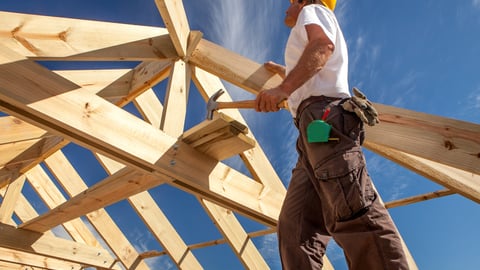Senate moves ahead with infrastructure package
The National Lumber and Building Material Dealers Association (NLBMA) reported taht the Senate passed the $1.2 trillion bipartisan Infrastructure Investment and Jobs Act by a vote of 69-30.
The legislation would provide $550 billion for new infrastructure projects over the next five years including roads, bridges, ports, rail, waterways, airports, public transit and broadband.
According to the NLBMDA, the legislation contains provisions that would benefit the lumber and building material dealer industry including reforms to streamline and expedite the federal permitting and environmental review processes, new workforce development initiatives to help alleviate labor shortages, and no tax additional increases on individuals or small businesses.
The House of Representatives will now take up the legislation when it returns from recess on Sept. 20. It remains unclear whether the legislation will have enough support to pass the House in its current form.
Over the next month, NLBMDA will continue to advocate on behalf of the LBM industry’s infrastructure priorities with key House members and legislative committees and will continue to stress the importance of rejecting any new tax increases in both the bipartisan infrastructure bill and a potential budget reconciliation bill.
Associated Builders and Contractors (ABC) president and CEO Michael Bellaman said the package contains “the most significant investment in our nation’s infrastructure in a generation and could yield crucial wins for the American people and construction industry.”
“It is promising to see progress made toward modernizing our nation’s roads, bridges, water infrastructure, transit, railways, ports and other critical infrastructure. This bipartisan accomplishment is something that has eluded Congress for decades and is proof of the possibilities when lawmakers choose compromise over conflict,” Bellaman said.
He also notes that the bill will cut down on unnecessary delays in federal construction projects and help address the workforce shorage in the construction industry.
“Importantly, the bill is paid for without raising job-killing taxes on our nation’s small construction businesses,” Bellaman said.
Here is a breakdown of what’s in the spending package from the NLBMDA:
Physical Infrastructure Investments: Includes $550 billion for new infrastructure projects over the next 5 years:
- Roads and bridges: $110 billion;
- Passenger and freight rail: $66 billion;
- Public transit: $39 billion;
- Airports: $25 billion;
- Ports and waterways: 17 billion;
- Electric vehicles: $15 billion;
- Road safety: $11 billion; and
- Power infrastructure: $73 billion;
- Broadband infrastructure: $65 billion;
- Water infrastructure: $55 billion;
- Resiliency and western water storage: $50 billion; and
- Environmental remediation: $21 billion.
Workforce Development and Training:
- Includes the DRIVE Safe Act which would establish an apprenticeship program that would allow for the legal operation of a commercial motor vehicle in interstate commerce by CDL holders under the age of 21.
- Includes the Pass the Promoting Women in Trucking Workforce Act which would require the Department of Transportation to establish an advisory board charged with identifying barriers to entry for women in the trucking industry and help identify and establish training and mentorship programs for women.
- Creates several job training and apprenticeship initiatives in the transportation sector.
Federal Permitting and Environmental Reviews: Includes reforms to streamline and expedite the federal permitting and environmental review processes. Will help improve housing affordability by providing more certainty in the housing review process.
No Tax Increases: Does not include any new tax increases on individuals or small businesses.
Energy Efficiency Upgrades for Residential and Commercial Buildings:
- Creates a pilot program to provide grants to nonprofit organizations for energy efficiency upgrades;
- Provides grants to states to establish revolving loan funds for energy audits and efficiency upgrades in residential and commercial buildings; and
- Provides grants for energy efficiency improvements in public school facilities.


